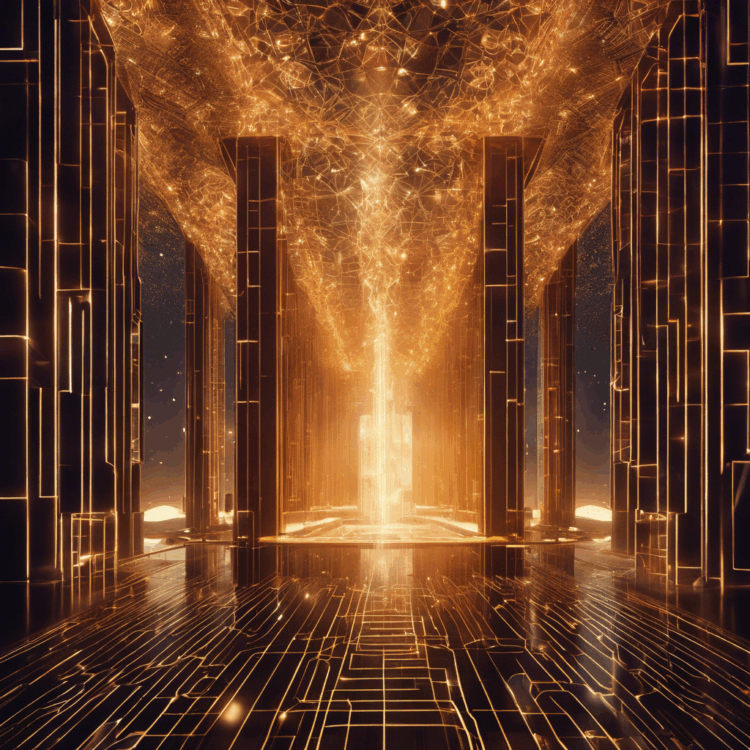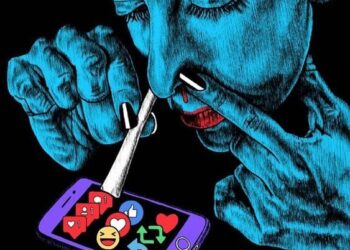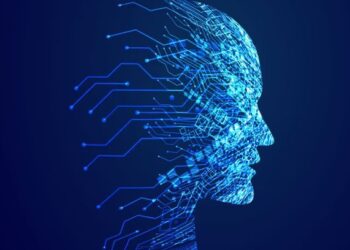For centuries, the art world has been governed by a few fundamental principles: a masterpiece is a tangible object, its value is tied to its physical scarcity, and its authenticity is verified by a select group of experts and institutions. Digital art, for a long time, was an outlier in this ecosystem—a creative medium that could be seen, shared, and enjoyed by millions, but never truly owned. A digital file, no matter how beautiful or complex, could be copied and distributed infinitely with a single click, making the concept of scarcity and ownership meaningless. This has all changed with the meteoric rise of Non-Fungible Tokens (NFTs). This article will take a deep dive into the revolution sparked by NFTs, exploring how they have not only validated digital art but also fundamentally altered the relationship between creators, collectors, and the digital landscape itself.
The story of digital art’s journey from a niche pursuit to a mainstream phenomenon is a testament to the power of technology to redefine value. NFTs have provided the missing piece of the puzzle: a secure, verifiable, and transparent way to assert ownership of a digital asset. By imbuing a digital file with the very principles of scarcity and provenance that govern traditional art, NFTs have unlocked a multi-billion dollar market and given a new generation of artists and creators the tools to monetize their work in ways that were previously impossible.
A. Understanding the Revolution: What is an NFT?
To grasp the true significance of NFTs, we must first understand the core technology that underpins them. The name itself provides the most important clue: “non-fungible.”
A. The Concept of Non-Fungibility: In simple terms, a fungible asset is one that can be exchanged for another identical asset. A $100 bill is fungible because it can be traded for any other $100 bill, and they will have the same value. A Non-Fungible Token, however, is unique and cannot be swapped on a one-to-one basis. Think of it like a plane ticket; your ticket for Flight 123 is tied to your specific seat and destination. You can’t simply swap it for a ticket to a different city and expect it to have the same value or utility. This uniqueness is what gives an NFT its value.
B. How Blockchain Technology Works: NFTs operate on a blockchain, a decentralized, public digital ledger. Most NFTs are created on the Ethereum blockchain, but others are gaining traction as well. When a creator “mints” an NFT, they are creating a record on the blockchain that links their unique digital file to a unique token. This record is immutable and transparent, meaning anyone can verify the token’s authenticity, its ownership history, and its creator. This technology eliminates the need for a central authority to certify ownership, making the process trustless and secure. The NFT itself is the digital certificate of ownership, not the digital file itself. You can still download and view a digital artwork that has an NFT, but only the person who owns the NFT can claim authentic ownership of it on the blockchain.
C. NFTs vs. Digital Files: This distinction is critical. A digital file (like a JPEG or MP3) can be infinitely copied. An NFT is the digital equivalent of a title deed for a piece of property. You can copy the deed, but it doesn’t mean you own the house. Similarly, anyone can save the image of a famous NFT like a CryptoPunk, but only the person who owns the associated NFT on the blockchain truly owns that unique digital asset. This distinction finally solves the problem of scarcity in the digital world.
B. The Impact on Artists and Collectors: A New Creative Economy
NFTs have not only solved the problem of ownership for digital art; they have also created a thriving, decentralized marketplace that benefits creators and collectors in new and exciting ways.
A. Empowering Digital Artists: For years, digital artists struggled to earn a living directly from their work. They often relied on commissions or selling prints, but the original digital creation itself had no inherent market value. NFTs have completely changed this. Artists can now sell their unique digital pieces directly to collectors, cutting out galleries and middlemen. Furthermore, many NFTs are programmed with smart contracts that grant the artist royalties every time their work is resold on a secondary market. This means an artist can earn a passive income stream from a single piece of work long after the initial sale, a revolutionary concept in the art world.
B. Creating Digital Scarcity: NFTs allow creators to imbue their digital work with scarcity. An artist can choose to create a single, unique NFT of a piece, a limited series of NFTs, or an open edition with an unlimited number of tokens. This gives them full control over the supply of their art, allowing them to create value through rarity. This newfound scarcity has been a key driver in the massive valuation of certain NFT collections.
C. Democratizing the Art Market: The traditional art market has long been seen as an exclusive club, accessible only to the wealthy and well-connected. NFTs have opened up this world to a global audience. Anyone with an internet connection and a cryptocurrency wallet can now browse, buy, and trade digital art on decentralized marketplaces. This has leveled the playing field, allowing artists from anywhere in the world to connect directly with a global base of collectors and build a loyal following.
C. Beyond Visual Art: The Expansive Reach of NFTs
While digital art has been the poster child for the NFT boom, the technology’s applications are far more extensive. NFTs are proving to be a versatile tool for proving ownership and uniqueness in the digital realm.
A. Music and Media: NFTs are poised to disrupt the music industry. Musicians can now sell albums, single songs, or even concert tickets as NFTs, giving fans a collectible item that also provides direct support to the artist. This model cuts out streaming services and record labels, allowing musicians to retain a much larger share of the revenue. Video content creators are also using NFTs to sell unique moments or clips, creating a new form of digital memorabilia.
B. Gaming and In-Game Assets: The gaming industry is a natural fit for NFTs. For years, players have spent billions on in-game items like skins, weapons, and virtual land. However, these assets were never truly owned by the player; they were held by the game’s publisher and could be removed or changed at any time. NFTs change this by allowing players to own their in-game assets on the blockchain. These assets can then be bought, sold, or traded on an open market, creating a real-world economy within virtual worlds. This is a core concept of the emerging Play-to-Earn gaming model.
C. Identity and Digital Real Estate: NFTs are being used to represent digital identity in a number of ways. They are the backbone of domain names on the Web3 internet, such as “.eth” addresses, which can serve as a user’s digital identity and wallet address. Furthermore, the rise of the metaverse has created a new market for digital real estate. Virtual land, buildings, and other assets are being sold as NFTs, allowing users to build and monetize property in a virtual world that has real-world value.
D. The Challenges and Criticisms of the NFT Space
Despite the excitement, the NFT market is not without its significant challenges and valid criticisms that must be addressed for it to mature.

A. Environmental Concerns: One of the most prominent criticisms of NFTs has been their environmental impact. Many of the most popular blockchains, especially Ethereum prior to its “Merge” to a more energy-efficient system, used a “Proof-of-Work” consensus mechanism that consumed a massive amount of energy. While newer blockchains and updated protocols are dramatically reducing this carbon footprint, it remains a serious concern for many potential collectors and creators.
B. Speculation and Fraud: The NFT market is highly speculative, with many buyers treating them as a quick-profit investment rather than a form of art. This has led to an inflated market and numerous instances of fraud, including “rug pulls,” where creators abandon a project after selling off the NFTs, and instances of artists’ work being minted as NFTs without their permission. The decentralized nature of the space makes it difficult to police, highlighting the need for caution and due diligence.
C. Copyright and Legal Issues: A common misconception is that buying an NFT grants you the full copyright and intellectual property rights to the artwork. This is often not the case. Unless explicitly stated in the smart contract, an NFT purchase only confers ownership of the digital token itself. The creator may still retain all commercial rights to the work. This legal ambiguity highlights the need for better standards and clearer communication in the industry.
In conclusion, the rise of digital art and NFTs is more than just a passing trend; it is a transformative movement that is rewriting the rules of ownership, value, and creativity. By providing a decentralized, transparent platform, NFTs have not only given a powerful voice to digital artists but have also unlocked a new form of digital economy. While the path ahead is filled with challenges related to sustainability, regulation, and market maturity, the underlying technology has proven its ability to fundamentally change how we create, consume, and value art in the 21st century. The future of art is digital, and the NFT is its key.













